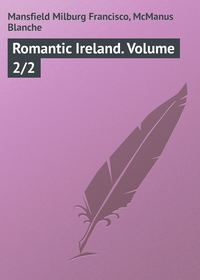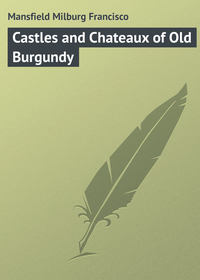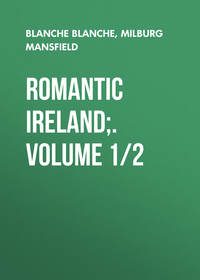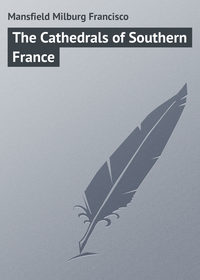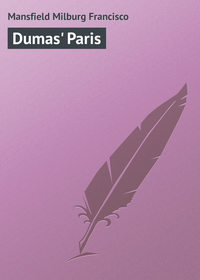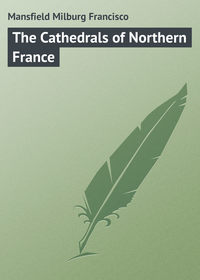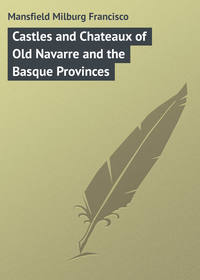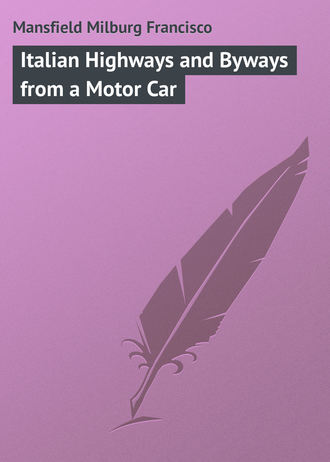 полная версия
полная версияItalian Highways and Byways from a Motor Car

Francis Miltoun
Italian Highways and Byways from a Motor Car
CHAPTER I
THE WAY ABOUT ITALY
ONE travels in Italy chiefly in search of the picturesque, but in Florence, Rome, Naples, Venice or Milan, and in the larger towns lying between, there is, in spite of the romantic association of great names, little that appeals to one in a personal sense. One admires what Ruskin, Hare or Symonds tells one to admire, gets a smattering of the romantic history of the great families of the palaces and villas of Rome and Florence, but absorbs little or nothing of the genuine feudal traditions of the background regions away from the well-worn roads.
Along the highways and byways runs the itinerary of the author and illustrator of this book, and they have thus been able to view many of the beauties and charms of the countryside which have been unknown to most travellers in Italy in these days of the modern railway.
Alla Campagna was our watchword as we set out to pass as many of our Italian days and nights as possible in places little celebrated in popular annals, a better way of knowing Italy than one will ever know it when viewed simply from the Vatican steps or Frascati’s gardens.
The palaces and villas of Rome, Florence and Venice are known to most European travellers – as they know Capri, Vesuvius or Amalfi; but of the grim castles of Ancona, of Rimini and Ravenna, and of the classic charms of Taormina or of Sarazza they know considerably less; and still less of Monte Cristo’s Island, of Elba, of Otranto, and of the little hidden-away mountain towns of the Alps of Piedmont and the Val d’Aoste.
The automobile, as a means of getting about, has opened up many old and half-used byways, and the automobile traveller of to-day may confidently assert that he has come to know the countryside of a beloved land as it was not even possible for his grandfathers to know it.
The Italian tour may be made as a conducted tour, as an educative tour, as a mere butterfly tour (as it often has been), or as a honeymoon trip, but the reason for its making is always the same; the fact that Italy is a soft, fair, romantic land where many things have existed, and still exist, that may be found nowhere else on earth.
The romance of travel and the process of gathering legends and tales of local manners and customs is in no way spoiled because of modern means of travel. Many a hitherto unexploited locality, with as worthy a monumental shrine as many more celebrated, will now become accessible, perhaps even well known.
The pilgrim goes to Italy because of his devotion to religion, or to art or architecture, and, since this is the reason for his going, it is this reason, too, which has caused the making of more travel books on Italy than on all other continental countries combined. There are some who affect only “old masters” or literary shrines, others who crave palaces or villas, and yet others who haunt the roulette tables of Monte Carlo, Biarritz, or some exclusive Club in the “Eternal City.” European travel is all things to all men.
The pilgrims that come to Italy in increasing numbers each year are not all born and bred of artistic tastes, but the expedition soon brings a glimmer of it to the most sordid soul that ever took his amusements apart from his edification, and therein lies the secret of pleasurable travel for all classes. The automobilist should bear this in mind and not eat up the roadway through Æmilia at sixty miles an hour simply because it is possible. There are things to see en route, though none of your speeding friends have ever mentioned them. Get acquainted with them yourself and pass the information on to the next. That is what the automobile is doing for modern travel – more than the stage or the railway ever did, and more than the aeroplane ever will!
One does not forget the American who went home to the “Far West” and recalled Rome as the city where he bought an alleged panama hat (made probably at Leghorn). He is no myth. One sees his like every day. He who hurried his daughter away from the dim outlined aisles of Milan’s Gothic wonder to see the new electric light works and the model tramway station was one of these, but he was the better for having done a round of the cathedrals of Italy, even if he did get a hazy idea of them mixed up with his practical observations on street-lighting and transportation.
Superficial Italian itineraries have been made often, and their chronicles set down. They are still being made, and chronicled, but the makers of guide books have, as yet, catered but little to the class of leisurely travellers, a class who would like to know where some of these unexploited monuments exist; where these unfamiliar histories and legends may be heard, and how they may all be arrived at, absorbed and digested. The people of the countryside, too, are usually more interesting than those of the towns. One has only to compare the Italian peasant and his picturesque life with the top-hatted and frock-coated Roman of to-day to arrive quickly to a conclusion as to which is typical of his surroundings. The Medicis, the Borgias, and the Colonnas have gone, and to find the real romantic Italian and his manner of life one has to hunt him in the small towns.
The modern traveller in Italy by road will do well to recall the conditions which met the traveller of past days. The mere recollection of a few names and dates will enable the automobilist to classify his impressions on the road in a more definite and satisfying manner than if he took no cognizance of the pilgrims who have gone before.
Chaucer set out ostensibly for Genoa in 1373 and incidentally met Petrarch at Padua and talked shop. A monk named Felix, from Ulm on the banks of the Danube, en route for Jerusalem, stopped off at Venice and wrote things down about it in his diary, which he called a “faithful description.” Albrecht Durer visited Venice in 1505 and made friends with many there, and from Venice went to Bologna and Ferrara. An English crusading knight in the same century “took in” Italy en route to the Holy Land, entering the country via Chambéry and Aiguebelle – the most delightful gateway even to-day. Automobilists should work this itinerary out on some diagrammatic road map. Martin Luther, “with some business to transact with the Pope’s Vicar,” passed through Milan, Pavia, Bologna and Florence on his way to Rome, and Rabelais in 1532 followed in the train of Cardinal du Bellay, and his account of how he “saw the Pope” is interesting reading in these days when even personally-conducted tourists look forward to the same thing. Joachim du Bellay’s “visions of Rome” are good poetry, but as he was partisan to his own beloved Loire gaulois, to the disparagement of the Tiber latin, their topographical worth is somewhat discounted.
Sir Philip Sidney was in Padua and Venice in 1573, and he brought back a portrait of himself painted in the latter city by Paul Veronese, as tourists to-day carry away wine glasses with their initials embossed on them. The sentiment is the same, but taste was better in the old days.
Rubens was at Venice in 1600, and there are those who say that Shakespeare got his local colour “on the spot.” Mr. Sidney Lee says no!
Back to the land, as Dante, Petrarch, even Horace and Virgil, have said. Dante the wayfarer was a mighty traveller, and so was Petrach. Horace and Virgil took their viewpoints from the Roman capital, but they penned faithful pictures which in setting and colouring have, in but few instances, changed unto this day.
Dante is believed to have been in Rome when the first sentence was passed upon him, and from the Eternal City one can follow his journeyings northward by easy stages to Siena and Arezzo, to the Alps, to Padua, on the Aemilian Way, his wandering on Roman roads, his flight by sea to Marseilles, again at Verona and finally at Ravenna, the last refuge.
This was an Italian itinerary worth the doing. Why should we modern travellers not take some historical personage and follow his (or her) footsteps from the cradle to the grave? To follow in the footsteps of Jeanne d’Arc, of Dante Alighieri, or of Petrarch and his Laura – though their ways were widely divergent – or of Henri IV, François I, or Charles V, would add a zest and reason for being to an automobile tour of Europe which no twenty-four hour record from London to Monte Carlo, or eighteen hours from Naples to Geneva could possibly have.
There is another class of travellers who will prefer to wax solemn over the notorious journey to Italy of Alfred de Musset and Georges Sand. It was a most romantic trip, as the world knows. De Musset even had to ask his mother’s consent to make it. The past mistress of eloquence appeared at once on the maternal threshold and promised to look after the young man – like a mother.
De Musset’s brother saw the pair off “on a misty melancholy evening,” and noted amongst other dark omens, that “the coach in which the travellers took their seats was the thirteenth to leave the yard,” but for the life of us we cannot share his solemnity. The travellers met Stendhal at Lyons. After supper “he was very merry, got rather drunk and danced round the table in his big topboots.” In Florence they could not make up their minds whether to go to Rome or to Venice, and settled the matter by the toss of a coin. Is it possible to care much for the fortunes of two such heedless cynics?
It is such itineraries as have here been outlined, the picking up of more or less indistinct trails and following them a while, that gives that peculiar charm to Italian travel. Not the dreamy, idling mood that the sentimentalists would have us adopt, but a burning feverishness that hardly allows one to linger before any individual shrine. Rather one is pushed from behind and drawn from in front to an ever unreachable goal. One never finishes his Italian travels. Once the habit is formed, it becomes a disease. We care not that Cimabue is no longer considered to be throned the painter of the celebrated Madonna in Santa Maria Novella, or that Andrea del Sarto and his wife are no longer Andrea del Sarto and his wife, so long as we can weave together a fabric which pleases us, regardless of the new criticism, – or the old, for that matter.
We used to go to the places marked on our railway tickets, and “stopped off” only as the regulations allowed. Now we go where fancy wills and stop off where the vagaries of our automobile force us to. And we get more notions of Italy into our heads in six weeks than could otherwise be acquired in six months.
One need not go so very far afield to get away from the conventional in Italy. Even that strip of coastline running from Menton in France to Reggio in Calabria is replete with unknown, or at least unexploited, little corners, which have a wealth of picturesque and romantic charm, and as noble and impressive architectural monuments as one may find in the peninsula.
Com è bella, say the French honeymoon couples as they enter Italy via the Milan Express over the Simplon; com è bella, say one and all who have trod or ridden the highways and byways up and down and across Italy; com è bella is the pæan of every one who has made the Italian round, whether they have been frequenters of the great cities and towns, or have struck out across country for themselves and found some creeper-clad ruin, or a villa in some ideally romantic situation which the makers of guide-books never heard of, or have failed to mention. All this is possible to the traveller by road in Italy, and one’s only unpleasant memories are of the buona mano of the brigands of hotel servants which infest the large cities and towns – about the only brigands one meets in Italy to-day.
The real Italy, the old Italy, still exists, though half hidden by the wall of progress built up by young liberty-loving Italy since the days of Garibaldi; but one has to step aside and look for the old régime. It cannot always be discovered from the window of a railway carriage or a hotel omnibus, though it is often brought into much plainer view from the cushions of an automobile. “Motor Cars and the Genus Loci” was a very good title indeed for an article which recently appeared in a quarterly review. The writer ingeniously discovered – as some of the rest of us have also – the real mission of the automobile. It takes us into the heart of the life of a country instead of forcing us to travel in a prison van on iron rails.
Let the tourist in Italy “do” – and “do” as thoroughly as he likes – the galleries of Rome, Florence, Siena, and Venice, but let him not neglect the more appealing and far more natural uncontaminated beauties of the countryside and the smaller towns, such as Caserta, Arezzo, Lucca, Montepulciana, Barberino in Mugello and Ancona, and as many others as fit well into his itinerary from the Alps to Ætna or from Reggio to Ragusa. They lack much of the popular renown that the great centres possess, but they still have an aspect of the reality of the life of mediævalism which is difficult to trace when surrounded by all the up-to-date and supposedly necessitous things which are burying Rome’s ruins deeper than they have ever yet been buried. It is difficult indeed to imagine what old Rome was like, with Frascati given over to “hunt parties” and the hotel drawing rooms replete with Hungarian orchestras. It is difficult, indeed!
Italy is a vast kinetoscope of heterogeneous sights and scenes and memories and traditions such as exist on no other part of the earth’s surface. Of this there is no doubt, and yet each for himself may find something new, whether it is a supposed “secret of the Vatican” or an unheard of or forgotten romance of an Italian villa. This is the genus loci of Italy, the charm of Italy, the unresistible lodestone which draws tens of thousands and perhaps hundreds of thousands thither each year, from England and America. Italy is the most romantic touring ground in all the world, and, though its highways and byways are not the equal in surface of the “good roads” of France, they are, in good weather, considerably better than the automobilist from overseas is used to at home. At one place we found fifty kilometres of the worst road we had ever seen in Italy immediately followed by a like stretch of the best. The writer does not profess to be able to explain the anomaly. In general the roads in the mountains are better than those at low level, so one should plan his itineraries accordingly.
The towns and cities of Italy are very well known to all well-read persons, but of the countryside and its manners and customs this is not so true. Modern painters have limned the outlines of San Marco at Venice and the Castle of St. Angelo at Rome, on countless canvases, and pictures of the “Grand Canal” and of “Vesuvius in Eruption” are familiar enough; but paintings of the little hill towns, the wayside shrines, the olive and orange groves, and vineyards, or a sketch of some quaint roadside albergo made whilst the automobile was temporarily held up by a tire blow out, is quite as interesting and not so common. There is many a pine-clad slope, convent-crowned hill-top and castled crag in Italy as interesting as the more famous, historic sites.
To appreciate Italy one must know it from all sides and in all its moods. The hurried itinerary which comprises getting off the ship at Naples, doing the satellite resorts and “sights” which fringe Naples Bay, and so on to Rome, Florence and Venice, and thence across Switzerland, France and home is too frequently a reality. The automobilist may have a better time of it if he will but be rational; but, for the hurried flight above outlined, he should leave his automobile at home and make the trip by “train de luxe.” It would be less costly and he would see quite as much of Italy – perhaps more. The leisurely automobile traveller who rolls gently in and out of hitherto unheard of little towns and villages is in another class and learns something of a beloved land and the life of the people that the hurried tourist will never suspect.
The genuine vagabond traveller, even though he may be a lover of art and architecture, and knows just how bad Canova’s lions really are, is quite as much concerned with the question as to why Italians drink wine red instead of white, or why the sunny Sicilian will do more quarrelling and less shovelling of dirt on a railroad or a canal job than his northern brother. It is interesting, too, to learn something – by stumbling upon it as we did – about Carrara marble, Leghorn hats and macaroni, which used to form the bulk of the cargoes of ships sailing from Italian ports to those of the United States. The Canovas, like the Botticellis, are always there – it is forbidden to export art treasures from Italy, so one can always return to confirm his suspicions – but the marble has found its competitor elsewhere, Leghorn hats are now made in far larger quantities in Philadelphia, and the macaroni sent out from Brooklyn in a month would keep all Italy from starvation for a year.
The Italian picture and its framing is like no other, whether one commences with the snow-crested Alps of Piedmont and finishes with Bella Napoli and its dazzling blue, or whether he finishes with the Queen of the Adriatic and begins with Capri. It is always Italy. The same is not true of France. Provence might, at times, and in parts, be taken for Spain, Algeria or Corsica; Brittany for Ireland and Lorraine for Germany. On the contrary Piedmont, in Italy, is nothing at all like neighbouring Dauphiné or Savoie, nor is Liguria like Nice.
As for the disadvantages of Italian travel, they do undoubtedly exist, as well for the automobilist as for him who travels by rail. In the first place, in spite of the picturesque charm of the Italian countryside, the roads are, as a whole, not by any means the equal of those of the rest of Europe – always, of course, excepting Spain. They are far better indeed in Algeria and Tunisia. Hotel expenses are double what they are in France for the same sort of accommodation – for the automobilist at any rate. Garage accommodation is seldom, if ever, to be found in the hotel, at least not of a satisfactory kind, and when found costs anywhere from two to three, or even five, francs a night. Gasoline and oil are held at inflated figures, though no one seems to know who gets all the profit that comes from the fourteen to eighteen francs which the Italian garage keeper or grocer or druggist takes for the usual five gallons.
With this information as a forewarning the stranger automobilist in Italy will meet with no undue surprises except that bad weather, if he happens to strike a spell, will considerably affect a journey that would otherwise have proved enjoyable.
The climate of Italy is far from being uniform. It is not all orange groves and palm trees. Throughout Piedmont and Lombardy snow and frost are the frequent accompaniments of winter. On the other hand the summers are hot and prolific in thunder storms. In Venetia, thanks to the influence of the Adriatic, the climate is more equable. In the centre, Tuscany has a more nearly regular climate. From Naples south, one encounters almost a North African temperature, and the south wind of the desert, the sirocco, here blows as it does in Algeria and Tunisia, though tempered somewhat by having crossed the Mediterranean.
There are a hundred and twenty-five varieties of mosquitoes in Italy, but with most of them their singing is worse than their stinging. The Pontine Marches have long been the worst breeding places for mosquitoes known to a suffering world. The mosquitoes of this region were supposed to have been transmitters of malaria, so one day some Italian physicians caught a good round batch of them and sent them up into a little village in the Apennines whose inhabitants had never known malaria. Straightway the whole population began to shake with the ague. That settled it, the mosquito was a breeder of disease.
The topography of Italy is of an extraordinary variety. The plains and wastes of Calabria are the very antitheses of that semi-circular mountain rampart of the Alps which defines the northern frontier or of the great solid mass of the Apennines in Central Italy. Italy by no means covers the vast extent of territory that the stranger at first presupposes. From the northern frontier of Lombardy to the toe of the Calabrian boot is considerable of a stretch to be sure, but for all that the actual area is quite restricted, when compared with that of other great continental powers. This is all the more reason for the automobilist to go comfortably along and not speed up at every town and village he comes to.
The automobilist in Italy should make three vows before crossing the frontier. The first not to attempt to see everything; the second to review some of the things he has already seen or heard of; and the third to leave the beaten track at least once and launch out for himself and try to discover something that none of his friends have ever seen.
The beaten track in Italy is not by any means an uninteresting itinerary, and there is no really unbeaten track any more. What one can do, and does, if he is imbued with the proper spirit of travel, is to cover as much little-travelled ground as his instincts prompt him. Between Florence and Rome and between Rome and Naples there is quite as much to interest even the conventional traveller as in those cities themselves, if he only knows where to look for it and knows the purport of all the remarkable and frequent historical monuments continually springing into view. Obscure villages, with good country inns where the arrival of foreigners is an event, are quite as likely to offer pleasurable sensations as those to be had at the six, eight or ten franc a day pension of the cities.
The landscape motives for the artist, to be found in Italy, are the most varied of any country on earth. It is a wide range indeed from the vineyard covered hillsides of Vicenza to the more grandiose country around Bologna, to the dead-water lagoons before Venice is reached, to the rocky coasts of Calabria, or to the chestnut groves of Ætna and the Roman Campagna.
The travelling American or Englishman is himself responsible for many of the inconveniences to which he is subjected in Italy. The Italian may know how to read his own class distinctions, but all Americans are alike to him. Englishmen, as a rule, know the language better and they get on better – very little. The Frenchman and the German have very little trouble. They have less false pride than we.
The American who comes to Italy in an automobile represents untold wealth to the simple Italian; those who drive in two horse carriages and stop at big hotels are classed in the same category. One may scarcely buy anything in a decent shop, or enter an ambitious looking café, but that the hangers-on outside mark him for a millionaire, while, if he is so foolish as to fling handfuls of soldi to an indiscriminate crowd of ragamuffins from the balcony of his hotel, he will be pestered half to death as long as he stays in the neighbourhood. And he deserves what he gets! There is a way to counteract all this but each must learn it for himself. There is no set formula.
Beggars are importunate in certain places in Italy be-ridden of tourists, but after all no more so than elsewhere, and the travelling public, as much as anything else, conduces to the continued existence of the plague. If Italy had to choose between suppressing beggars or foregoing the privilege of having strangers from overseas coming to view her monuments she would very soon choose the former. If the beggars could not make a living at their little game they too would stop of their own accord. The question resolves itself into a strictly personal one. If it pleases you to throw pennies from your balcony, your carriage or your automobile to a gathered assembly of curious, do so! It is the chief means of proving, to many, that they are superior to “foreigners!” The little-travelled person does this everywhere, – on the terrace of Shepheard’s at Cairo, on the boulevard café terraces at Algiers, from the deck of his ship at Port Said, from the tables even of the Café de la Paix; – so why should he not do it at Naples, at Venice, at Rome? For no reason in the world, except that it’s a nuisance to other travellers, decidedly an objectionable practice to hotel, restaurant and shop keepers, and a cause of great annoyance and trouble to police and civic authorities. The following pages have been written and illustrated as a truthful record of what two indefatigable automobile travellers have seen and felt.


